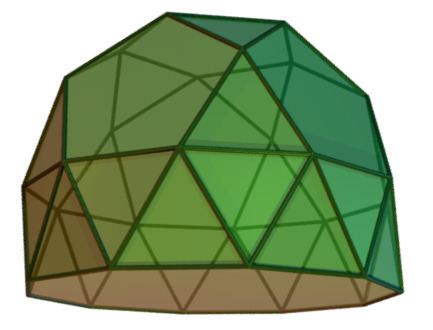Edges 65 Symmetry group C5v | Vertices 30 | |
 | ||
Type JohnsonJ24 - J25 - J26 Vertex configuration 2.5(3.5.3.5)2.5(3.10)10(3.5) | ||
In geometry, the gyroelongated pentagonal rotunda is one of the Johnson solids (J25). As the name suggests, it can be constructed by gyroelongating a pentagonal rotunda (J6) by attaching a decagonal antiprism to its base. It can also be seen as a gyroelongated pentagonal birotunda (J48) with one pentagonal rotunda removed.
A Johnson solid is one of 92 strictly convex polyhedra that have regular faces but are not uniform (that is, they are not Platonic solids, Archimedean solids, prisms or antiprisms). They were named by Norman Johnson, who first listed these polyhedra in 1966.
Dual polyhedron
The dual of the gyroelongated pentagonal rotunda has 30 faces: 10 pentagons, 10 rhombi, and 10 quadrilaterals.
References
Gyroelongated pentagonal rotunda Wikipedia(Text) CC BY-SA
